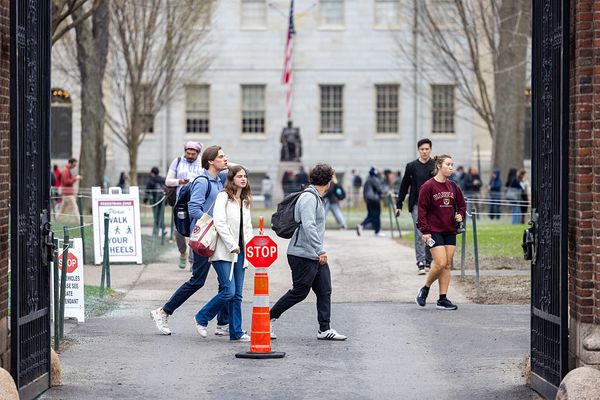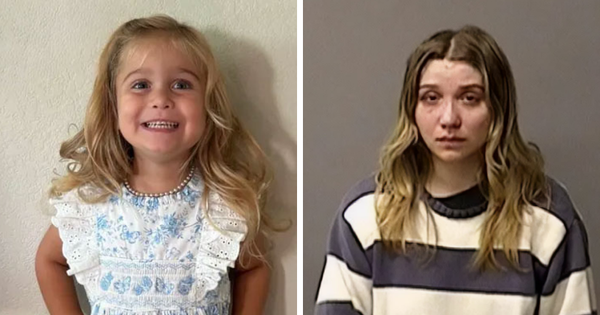Amazing news from Netflix: there is an extraordinary treatment available for children with very severe neurological disabilities, one that, given the appropriate level of parental gumption, will grant kids written off as hopeless cases the ability to walk and talk. The medical establishment, populated as it is with hopeless dinosaurs, hasn’t yet absorbed its full significance, and you won’t find it on the NHS, or through mainstream providers in the United States or Europe. But quietly, almost magically, it is already changing lives.
The device that provides this treatment, the Cytotron, is the subject of the Mexican movie Lucca’s World, the No 1 non-English-language film on the world’s biggest streaming platform last week. It follows one family – led by a remarkable mother, Bárbara Anderson, on whose memoir the movie is based – as they turn every stone in pursuit of a better life for their little boy. And as soon as Anderson learns about the Cytotron, there is very little room for doubt about its remarkable properties. By “stimulating the damaged brain cells in order for them to become more active and create new connections”, the device can apparently restore the functions that have been destroyed by Lucca’s severe cerebral palsy. “The Cytotron will mark a before and after in the history of medicine,” we learn. It’s “scientifically supported”. Yes, it’s eye-wateringly expensive – $50,000 for a single course of treatment in the movie – but that’s because it’s unprecedented.
An old-school doctor in the film objects that the inventors of the device – basically a pimped-out MRI machine that directs radio waves at the patient – would “already have the Nobel prize for medicine” if their claims stacked up. He quickly realises that he is hopelessly wrong. After the machine works its magic, Lucca takes some hesitant supported steps, and says “mama”; a postscript tells us that he has “started walking and talking”. The viewer is left with the same lesson as Anderson: failing to pursue such a prospect is “surrender”, or “giving up”. The only worthwhile imperative is in the promise she makes her son: “I promise I won’t rest until you get better.”
As parents of a toddler with cerebral palsy, we understand that resolution better than most. In the year and a half since our son suffered a significant brain injury after he stopped breathing in his sleep, we have read countless research papers, consulted every expert who will talk to us and paid through the nose for treatments whose efficacy we will never know definitively.
The parts of the movie that deal with that desperate search will be instantly recognisable to any family in the same boat. So, too, is the depiction of how alarming it is to find that the science is much more ambiguous than you would hope, that the most rigorous specialists in the field will tell you that this is more often a world of “worth trying” than “definitely do”. Through all of this, we have also learned that if you aren’t your child’s most reliable advocate, you can’t expect anyone else to be.
But another lesson we have learned is the crucial importance of keeping a foot in the reality-based community. The more we watched Lucca’s World, and the more we read, the more astonished we were that Netflix would release this movie, and spread its fantastical message to many millions of viewers. While the film begins with a disclaimer saying that some scenes have been altered for dramatic purposes, the average viewer would surely expect a film based on a true story to have at least a passing relationship to the truth; and the truth is that for the vast majority of parents who long for something similar for their own children, Lucca’s World is an unattainable one.
In publicity for the film, Anderson told Infobae Mexico: “I never recommend … nor promote [the treatment]. I only describe the journey of taking an experimental treatment that, in the case of my son, worked.” You can decide for yourself how that statement squares with the movie’s postscript, which tells us that “Bárbara, Andrés and a group of investors bought two Cytotrons and opened the first clinic outside India”. One of these devices was provided to the Federico Gómez Children’s Hospital of Mexico, which briefly ran a study into the Cytotron’s use. Last week, the hospital said that the study was discontinued after a year because of a lack of progress.
If you are looking for the vaunted “scientific support” for the Cytotron, you might look at a rival enterprise in Mexico, Neurocytonix, which markets the device as the Neurocytotron. They conducted the only visible study on its efficacy as a treatment for cerebral palsy, completed in 2021. Neurocytonix has used the completion of this “gold standard” randomised clinical trial in marketing communications. But almost four years after the study’s completion, the results still have not been published. A generous description of that hiatus would be “highly unusual”. The experts who have helped us with our own son’s care have a pithier description. Last week, the Mexican Society of Pediatric Neurology issued a statement warning that no clinical trials have demonstrated the efficacy of the Cytotron.
When we asked Neurocytonix for comment, they distanced themselves from the film and told us that a second phase of the study was completed last year, saying that “multiple manuscripts are in preparation for publication” without addressing why it has taken so long. They emphasised that the treatment remains unproven, and said that Bárbara Anderson’s lack of scientific training “may have led to misinterpretations of scientific evidence”. (Netflix declined to comment.)
As for another of the movie’s heroes, Rajah Vijay Kumar, the Indian doctor and serial inventor who came up with the Cytotron: he previously drew attention when he launched Shycocan, an electron-producing device which claimed to stop the spread of coronavirus in closed spaces “by photon mediation”. That was approved by the US Food and Drug Administration (FDA), it was reported. But it wasn’t, and many reputable scientists say that it has never been backed up by evidence.
Then there’s Lucca himself. The film is a dramatisation, and we don’t know exactly what his life post-treatment looks like. But we can say this: the actor in the movie “walked” with the soles of his feet squarely on the ground, not something that Lucca appears able to do in videos of him using a supportive device on his mother’s Instagram feed. Lovely though those moments are – we’ve had them ourselves – credible physiotherapists do not see them as a reliable predictor of functional walking in children with severe cerebral palsy. And several years after he said “mama” on his own, a recent update shows Lucca undergoing treatment where a speech therapist opens and closes his mouth to form consonants on his behalf.
If Lucca has seen any benefits, that’s wonderful. But there is no available scientific evidence that they are replicable for anyone else. Nonetheless, parents are flocking to Neurocytonix, and trying to come up with tens of thousands of dollars for a “research donation” that the company asks for, since it would be illegal to charge for a treatment not approved by Mexico’s medical regulators: the page after page of Google results for “gofundme neurocytonix” are a portrait of undaunted hope. For everyone else, the Netflix movie provides, as one reviewer says, a “feelgood note to end on”. A better phrase for this is “inspiration porn”: the designation of disabled lives as a handy pick-me-up when you’ve got a case of the Mondays, to be quietly set aside if the messier truth threatens to intervene.
Above all: Lucca’s World perpetuates the idea that children like our son are broken and must be repaired, rather than whole people who deserve every chance to live full and happy lives. It divides parents into those who make their children better, and those who surrender. It tells its audience that stories like Lucca’s have a simple, happy ending. But these stories don’t conclude with a bow around them. They are much more complicated and beautiful than that.
That isn’t how Lucca’s World sees the little boy without whom it would not exist, though. The very last shot Netflix gives us is of the real Lucca, smiling at the camera, perfectly himself. Over the top, Coldplay sing us out with the moral: “I will try to fix you.”
Archie Bland is the editor of the Guardian’s First Edition newsletter. Ruth Spencer is a former editor at Guardian US
Do you have an opinion on the issues raised in this article? If you would like to submit a response of up to 300 words by email to be considered for publication in our letters section, please click here.







